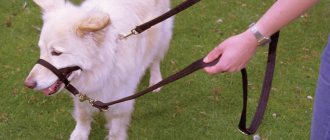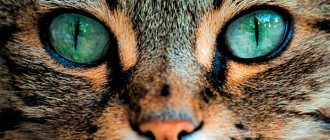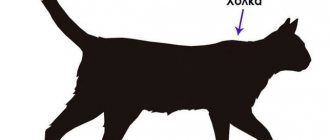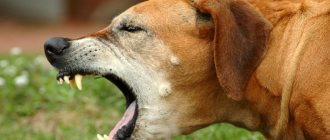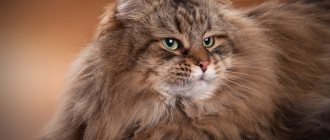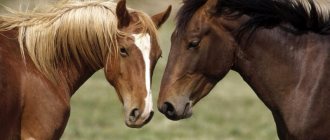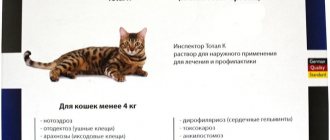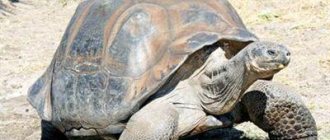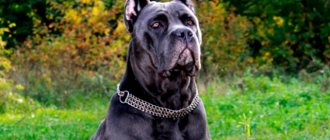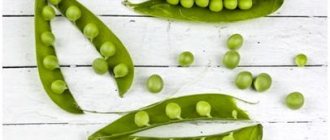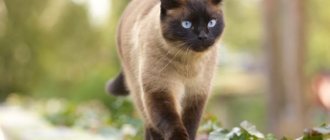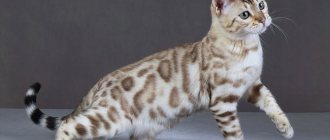Everyone knows what horses look like, but few people think about what a horse’s skeleton is and the internal structure of the animal’s organs. However, a novice horse breeder is recommended to become familiar with the anatomy of horses and the functions of vital organs - this will help avoid mistakes when working with horses.
Horse skeleton
What is croup
The croup is one of the most important components of the hip area of horses.
It is responsible for the motor ability of the hind limbs, as well as their strength. As a final result, a developed and correctly formed croup enables the horse to show excellent results not only in the duration of the race, but also in the duration of the jump during the run. That is why this area is one of the most important when evaluating thoroughbred trotters. The basis for the croup is the pelvic and sacral bones (bottom, ischium, ilium), three caudal vertebrae, trochanters of the femur and sacro-isciatic ligaments, which during the development of the horse’s body grow together into a strong but dynamic formation. The muscular section consists of the muscles of the right and left gluteal zones.
It consists of the following muscles:
- upper layer - superficial gluteal muscle, vertebral heads of semimembranosus, semitendinosus and biceps muscles, caudal muscles, levator ani;
- central layer - gluteus medius muscle;
- bottom layer - obturator muscles, iliopsoas, double, deep gluteal muscles.
Spinal column
The horse's spine contains 54 vertebrae: 7 cervical, 18 dorsal, 6 lumbar. It begins at the base of the skull and extends the length of the entire body, including the neck, back, lower back and tail. The vertebrae are held together sequentially by cartilage tissue. This is how the spine is formed.
The individual vertebra has a fairly large hole in the middle, which allows the formation of a continuous canal for the protected placement of the spinal cord. At the lumbar level, the vertebrae fuse to form the sacrum, to which the caudal vertebrae are attached.
Horse structure
The description of a horse of any breed begins with the exterior, where the most important features and structural features are indicated: neck projection, withers, head profile, shoulder and back structure, croup length, limb posture.
The most common defects are also indicated in the description: softness of the back, sabering, butt-shaped pasterns, etc. You can understand all the features of an animal’s exterior only by understanding the structure of the horse.
Features of the horse skeleton
The horse skeleton includes more than two hundred bones. Each bone of the skeleton is covered with durable periosteal tissue and penetrated by a large number of blood vessels. The periosteal tissue contains a large number of nerve endings that transmit signals to and from the brain.
All bones are connected to each other - some by movable joints, some by fixed joints. The bones that make up a horse's skeleton vary in shape, size, type and strength.
So the horse’s skull consists of thirty-four fairly strong and flat bones, connected to each other by sutures. The bones are immobile, and their strength allows them to withstand quite strong blows.
However, it is significantly lighter than the skull of cows or even pigs, and its shape is more streamlined and pointed. The bones of the limbs are characterized by movable joints, greater thickness, and a more rounded shape.
Features of the structure of the horse's body, legs and head
Regardless of the breed, purpose, age or gender, the horse’s body structure remains unnamed and consists of:
- Heads.
- Necks.
- Torso.
- Limbs.
The science of horses or hippology - gives a clear description and definition of each part of the horse skeleton, its features, functionality, as well as possible defects and shortcomings.
Horse's head
The expressiveness of a horse's head depends entirely on the breed of the animal. The profile can be convex, concave, straight, with a small hump.
A beautiful head should have correct proportions, be dry, with light lines, mobile ears, wide and open, clean nostrils, well-defined ganache. The correct length of the head is 2/5 of the height of the animal at the withers.
The optimal head position is at an angle of 45 degrees to the neck. This position does not create problems for the horse’s work and collection, and does not cause breathing or health problems.
The horse's eyes are large and expressive, with long and often thick eyelashes. Like people, an animal's eyes can express fatigue or fear, reflect good or bad health, and show mood.
The eyeball should be clean and clear - any clouding indicates serious problems in the horse's health. These noble animals are not adapted to breathing through their mouths.
Inhalation and exhalation are carried out through the nostrils, which are covered with very sensitive and thin skin with long, thin hairs that perform a tactile function.
With age, teeth wear down. The bit iron rests on the toothless edge of the mouth, located between the incisors and molars.
The toothless edge of the mouth is a feature of the structure of the horse’s jaw, and not the result of the removal of part of the teeth, as many people think.
Torso
The horse's body is the main and most complex part of the animal's structure. The withers are the highest point of the body, above the shoulder. It is at the withers that the height of the animal is measured. The withers can be medium, high, low, wide or narrow.
A long dorso-lumbar line runs along the entire back from the withers to the sacral joint.
It is an important connecting link between the front and rear girdles of the limbs, a kind of axis for transmitting the impulse of movement from the back pair of legs to the front
The length of the line must correspond to the direct use of the horses. Thus, riding breeds have a longer back line, while draft breeds have a shorter back line, with good muscles and sufficient width.
This is explained by the difference in gaits (harness breeds are more inclined to step work), as well as the use of the back muscles.
A concave back is a significant disadvantage for both riding and draft breeds.
The ideal shape of the croup is slightly sloping, with good muscle definition and of sufficient length for the breed. A horizontal croup reduces performance and negatively affects the functioning of the hock joints, and an excessive slope is inherent in horses with a strong and frisky gallop, but negatively affects the quality of the trot and stride.
The chest is medium in width, but high and fairly deep - a feature of the riding breeds.
Skeleton appearance
Appearance Features:
- The longer, more graceful the neck, the more mobile the back of the head, the easier it is for the horse to make the movements necessary for riding and sports. A massive neck is a sign of working horses. Normally, the neck is about a third longer than the head.
- High and long withers are more common in riding horses, and low or absent, short withers are more common in draft horses.
- A wide and deep chest makes it possible to accommodate the horse’s voluminous heart and lungs in its anatomy, and this gives hope for high performance and endurance.
- The back should be straight and moderately muscular. An arched back is preferable to a sagging back.
- The stomach should not be saggy or excessively lean, preferably moderately toned.
- The thoracic spine of a horse includes 18 (19) vertebrae with ribs, the lumbar spine - 6 (5).
- The tail is formed by 17-19 vertebrae, depending on the breed. The area of the first caudal vertebra is called the rump. The tail has two purposes - to shoo away insects and to cover the anal area.
- The legs vary in length and blade shape. The hooves deserve special attention. Working horses have proportionally more massive legs, wider hooves with high soles and low heels.
- The horse skeleton is conventionally divided into axial and peripheral parts. It carries out motor, support and holding functions. The skeleton is fully formed around 5 years of age.
Back
The length of a horse's back consists of the length of the withers and the chest. The shorter the back, the stronger it is. For galloping, this back is the best because it allows the hind legs to move quickly forward.
To avoid stiffness and poor liveliness with a short back and too high and elongated withers, the animal must have a very elongated loin.
A back that is too long reduces the coordination of the horse's front and hindquarters with each other. Violation of smooth movement affects speed performance
For dressage, this is not as important as for running or jumping. A slightly elongated back is a characteristic feature of harnessed horses.
Breeds with a short back are better at pushing, but they are not able to actively perform lateral flexion movements.
The optimal shape of a horse's back is straight, with a slight bend. If the animal is used incorrectly, sagging of the back may occur, as well as injury to the lumbar region and withers. To prevent this process, it is necessary to position the saddle correctly. A horse with a carp-shaped (convex) body shape may be suitable for harnessing, but not for riding. In the latter case, there may be a spinal injury, since flexibility is impaired.
An increase in the length of the lower back leads to some loss of efficiency during the push, as it extinguishes it. In this zone, the horse makes flexion movements with its body. If the loin is too short, the horse's ability to perform such locomotive processes is reduced.
The position of the lower back relative to the horizontal surface varies. It may be straight or the developed muscle mass raises it slightly, which is normal. A sunken loin shape means the top of the pelvic bones are drooping down and is a sign of weakness in the animal and loss of muscle mass. The lumbar region of the horse requires increased attention.
Correct back parameters
Skeleton
Bones are the foundation of the body. The horse's skeleton is created in such a way as to provide the ability to run quickly and have the ability to bear heavy loads. When a small foal is born, you can count 250 different bones in its skeleton.
Interesting. In an adult individual, the skeleton contains much fewer of them - 212 pieces.
The central part of the entire skeletal system of an animal is the spine. It performs a unifying function in relation to various parts of the horse, serving as a support for the back, lower back, limbs, and neck.
The ribs are located in different directions from the vertebrae. They are curved and cover the animal's chest. They have an important protective function in relation to the lungs and other internal organs. The ribs are connected to the lower sternum through cartilaginous connections.
The backmost part of the spine is the sacrum. From there come the pelvic bones. The horse's front legs are attached to the sternum, and the hind legs are attached to the pelvic bone.
Basics or articles
The study of anatomy begins with an examination of the skeleton and parts of the animal. The horse skeleton consists of 252 bones that perform motor and support functions. The bones of such a large but very dynamic animal are subject to large static loads. Therefore, the skeleton is very strong. For comparison, horse bones can withstand compression 2-3 times greater than granite, and in terms of tensile strength they are close to cast iron or brass.
You can find out in more detail what the horse’s skeleton is made of, as well as how many bones there are, by looking at the photo.
Horse skeleton - diagram
Stati
This is a part of the horse's body that performs a specific function in its body. Examining an animal according to its characteristics, taking into account age and gender, allows you to accurately assess its external characteristics and identify its advantages and disadvantages. During a professional examination, the exterior is assessed according to several dozen items, which are combined into three groups: 1- head, neck, torso, croup; 2 – limbs; 3 – build or constitution.
Horse statistics - diagram
Leather and its derivatives
The horse's skin is thin, its development is explained by breed characteristics, age, constitution, and maintenance. Racehorses have the thinnest skin, while heavy draft animals have rough skin. The thin type of leather allows for increased heat transfer, which is necessary for racehorses under heavy loads. Local breeds (Yakut, Bashkir, Mongolian) have a developed coat of skin.
Horses have highly developed sweat glands that prevent the animal from overheating during heavy exercise, causing them to become covered in “soap.”
In the thickness of the skin there are hair follicles - special formations from which hair is formed. In a horse, there is an integumentary type of hair that forms the basis of the coat, a long type forms the mane and tail, and sinus hair serves as the organs of touch.
The hardest derivative of the skin is the hoof horn - a durable capsule covering the distal digital phalanges. The hoof has a complex structure that provides constant renewal of the hard wall, shock absorption when walking, and protection from uneven ground.
Skin
Horses have thin skin.
Its development is influenced by various factors:
- breed characteristics;
- age-related changes;
- body constitution;
- conditions of detention.
Some additional features of the skin of the described animals:
- the thinnest skin is that of racehorses, this increases the body’s heat exchange under heavy loads;
- draft horses have rough skin;
- the dermis of horses has sweat glands, which are well developed and are able to prevent animals from overheating during exercise, covering the body with a kind of “foam”;
- the thickness of the animal's skin has hair follicles that form integumentary hairs, so some species (Yakut, Bashkir, Mongolian horses) have thick hair;
- long hair on the horse's dermis forms a tail and mane;
- sinus hairs (in the area of the nose, ears, lips and eyes) perform a tactile function.
Tail
The tail is formed by a rib and hair.
The last extension of the spine is called the reticulum. Thanks to the muscles, the mobility of the tail is ensured.
The tail not only helps horses protect themselves from blood-sucking insects, but also plays a role in coordinating movements. Today, many horse owners braid their pets' tails with ribbons.
Ears
Ears for horses and ponies are a very important sensory organ. Having good hearing, animals can easily navigate in the dark, in unfamiliar areas, and recognize signals at a distance of hundreds of meters. Horses' ears themselves consist of soft cartilaginous tissue, are high, most often straight and very mobile. The horse can turn each ear in different directions independently of each other. In addition, the ears are an excellent reflection of the emotional state, showing anger, irritation, fear or interest of the animal, as in the photo.
The horse has five main senses:
- gustatory
- olfactory
- tactile
- auditory
- visual
The organ of smell is located in the nasal cavity. Horses have a particularly sensitive sense of smell, which allows them to determine the condition of the feed and refuse it if the food is spoiled.
The organ of vision is the eye, which consists of the eyeball connected to the brain and other organs.
The eyeball is located in the bony socket and consists of a membrane, blood vessels, nerves and light-refracting media.
Skull box
Skull bones
- 1 – incisor bone;
- 2 – nasal bone;
- 3 – maxillary bone;
- 4 – lacrimal bone;
- 5 – zygomatic bone;
- 6 – frontal bone;
- 7 – parietal bone;
- 8 – temporal bone;
- 9 – occipital bone;
- 10 – lower jaw;
- 11 – orbit.
The skull contains 34 bones. They are concave or curved flat plates. The connection between each other is rigid - through seams. Nature made sure that the vital organs of the horse's head were reliably protected. The skull contains the brain and hearing organ. The eye is located in the orbit, and the digestive tract, vocal cords, and endocrine glands originate in the oral cavity. This is where the airways begin.
Summary
When considering the structure of horses, the main attention is paid to the articles. They allow you to determine the scope of use of the animal in accordance with its parameters
This is influenced by various indicators, for example, the volume of the chest, the shape of the neck and croup, etc.
Thus, speed and agility are important for racehorses, which is expressed in appearance and build. They are taller, lighter, their muscles are developed, but less than those of heavy trucks. The article lists only the main articles; in fact, there are many more.
Who are you in Agriculture Poll Options are limited because JavaScript is disabled in your browser.
Classification of horse breeds
The text has already touched on the topic that there are different breeds of horses with different characteristics. And here are a few classifications that will help you not get confused when choosing a horse:
- Horse riding. These are very fast, tall and hardy animals. Usually participate in horse races. There are Akhal-Teke, purebred riding, Don, Budyonnovsk breeds, etc.
- Trotters. Frisky, lean and efficient. There are Oryol, Russian trotting breeds, etc.
- Sled. Massive, large, efficient. There are Tori, Kuznetsk, Latvian breeds, etc.
- Heavy. They are very large, strong and resilient. There are Soviet, Vladimir breeds, etc.
A horse is a magnificent animal that can withstand serious loads. Even in our time, they will be relevant for a long time, since they can be seen everywhere: at riding competitions, in parades, in the circus, on farms, in films, even police officers use horses as a means of transportation.
And in order to keep a horse in good condition, you need to monitor its behavior and nutrition, and there must be constant care for it.
Thanks to all this, she can live a long life. On average, horses live up to 25 years. But with good care they can live much longer. We invite you to read: How and what to feed Alabai, tips and recommendations for potential owners
Features of the structure of the head
The horse's muzzle has the following profile options:
- Straight;
- Concave;
- Convex.
These parts may differ for certain breeds. For example, the concave muzzle of a horse is characteristic of purebred Arabian horses, which are often bred in arid areas. Due to this, less sand gets into the nostrils, which makes life easier in desert conditions.
Arabian horse - concave muzzle
Representatives of riding breeds have a straight profile. This ensures normal patency and free circulation of air through the nostrils. This helps animals when running.
Holstein breed - straight muzzle
A horse's muzzle with a convex profile is more common in trotters. Despite some roughness of the constitution, this does not in any way affect the endurance and working qualities of such horses.
Franco-American Trotter - convex muzzle
The horse's skull determines the structure of its head
When considering it, it is important to pay attention to the ganaches. This name refers to the zone of the angles of the lower jaw. The distance between the corners should be free enough so that the animal’s breathing is not difficult when bending the neck
To check, you can place your fist in the cheek. If it passes and fits freely, the distance is of normal width
The distance between the corners should be free enough so that the animal’s breathing is not difficult when bending the neck. To check, you can place your fist in the cheek. If it passes and fits freely, the distance is of normal width.
Eyes
These animals have lateral eyes, which helps increase vision. If you need to see what is happening on the left or right side, it is not necessary for the horse to turn his head and tense his muscles. But there is one nuance regarding vision. Everything in front of her nose and behind her rump falls into her blind spot.
horse eye
The pupil and iris are dark in color and brown or black. Pigmentation is also allowed. This does not in any way affect the overall working qualities of the animal.
The horse's eye is moderately convex, with a thin eyelid. Excessive convexity indicates disturbances in the functioning of the visual apparatus.
Jaw structure
Age is determined by the shape and number of teeth. The horse's jaw along with the tongue are part of the oral cavity.
The structure of the horse's jaw
The animal must have a developed jaw without defects. Malocclusion and other defects are undesirable. This can further have a negative impact on the horse's performance. She will not be able to digest roughage normally.
If there are defects in the toothless edge of the jaws, difficulties arise with inserting the bit.
Ears
The ears are proportional to the horse's head, or slightly smaller. They are located high and stand straight. The following types are distinguished:
- Pointed;
- Straight;
- Rounded.
Particular attention should be paid to the mobility of the ears. This feature determines not only the emotional state of the animal, but also the condition of the hearing aid.
An alarming sign is complete immobility of the ears. The animal may be deaf.
Horse ears
If, on the contrary, it moves its ears excessively, this is also an alarming signal. Thus, the animal tries to use its hearing organs to the maximum due to a lack of visual information due to problems with the eyes. Normally, the ears have a slight slope. Also, in a calm state, they are relaxed and moderately mobile.
Nostrils
Horse nostrils
A horse's nose has thick or thin walls. The space in the nostrils should be clean and moist. Cloudy liquid in the nasal mucous membranes can be an alarming signal indicating an illness in the animal. The nostrils hardly move if the horse is at rest.
Internal organs and systems
In horses, like in all mammals, the internal organs form separate systems.
The cardiovascular system
The horse's cardiovascular system includes:
- the heart, located inside the sternum;
- vascular branches that penetrate the entire body of the animal and supply blood to all organs. They saturate them with oxygen and nutrients, and also remove waste products.
Respiratory
The horse's respiratory system includes:
- larynx;
- trachea;
- two lungs.
Did you know? The longest-lived stallion is considered to be a horse named Billy, born in 1760 in Great Britain. The pet had good health, and until his death in 1822 he was used in heavy work, including towing barges.
Digestive
The equine digestive system works as follows:
- when food enters the stomach, it is processed, due to which the beneficial components from the food saturate the blood and are transported to the tissues;
- waste products enter the liver and renal system and are then excreted from the body through the intestines and urinary tract.
Nervous
The nervous system is regulated by the brain and spinal cord and affects all activities of the body:
- metabolic processes;
- energy exchange;
- lymph circulation;
- motor activity.
Urinary
The urinary system in horses works as follows:
- fluid formed in the kidneys accumulates in the pelvis and is excreted through the ureters into the bladder;
- urine is discharged from the bladder through the urethra (in the mare, the canal is located in the vestibule of the vagina; in the stallion, the genitourinary tract is formed, which also serves for sperm excretion).
Reproductive organ system
The reproductive organs of horses are anatomically and functionally related to the excretory system and have gender characteristics and differences.
Male genitals
The stallion's reproductive system has the following structure:
- testes or gonads (paired organs), which are located between the thighs and are located in the leathery sac or scrotum (the location of the testes outside the body provides optimal conditions for the maturation of sperm);
- bladder and prostate glands;
- the genital penis, consisting of a cavernous body, which is capable of filling with blood during an erection, increasing the size of the sexual organ and providing it with hardness;
- the penis also contains the urogenital canal.
Did you know? Due to its highly organized nervous system, horses allow them to easily develop conditioned reflexes that last a lifetime. This makes it possible to widely use these animals in many areas of the national economy.
Females
The reproductive organs of females are:
- two ovaries, in which sex cells and hormones are formed;
- fallopian tubes, designed to carry eggs through them;
- the uterus (tubular organ) in which the fetus develops;
- vagina (during arousal it can become abundantly covered with epithelium);
- lips major and minor, vestibule and clitoris (external genitalia).
Thus, a racehorse, according to the parameters described above, will be distinguished by maneuverability and speed, and a horse used for heavy work in the national economy will have strong bones and well-developed muscles.
Stati horses
In order to conveniently compare the exterior of a horse, parts of its body are identified; in horse breeding they are called articles
When assessing the structure of a horse, you should pay attention to such aspects as: back, croup, head, lower back, withers, stomach, front and hind limbs and chest. As a rule, the exterior is examined in parts, but is always assessed in general
A horse's conformation assessment includes overall conformation and breed typicality. If a person knows the exterior, then this will help him determine the breed of the horse, its state of health, look at the shortcomings of the structure and the scope of the breed. If the animal’s exterior has pathological changes that are considered a breed defect, then in the future the horse will not be able to work well, will not have breeding value, and its monetary value will decrease.
Stati horses pic. 1
Become a horse
- ears
- bang
- temple
- forehead
- nose (snoring)
- muzzle
- head
- lips
- chin
- mental fossa
- branches of the mandible
- ganache
- nuchal crest
- back of the head
- neck crest
- side of neck
- throat
- yoke gutter
- humeroscapular tubercle
- breast
- spatula
- withers
- back
- small of the back
- Maklok
- sacrum
- tail tip
- croup
- hip
- buttock
- ischial tuberosity
- sigh
- chest (ribs)
- false ribs
- sternum
- stomach
- prepuce
- groin area
- knee
- shin
- Achilles tendon
- heel
- hock joint
- metatarsus
- chestnuts
- spurs
- brushes (fries)
- shoulder
- elbow
- forearm
- carpal joint (wrist)
- metacarpus
- fetlock joint
- puto (grandmother)
- whisk
- hoof toe
- lateral wall of the hoof
- heel of the hoof
- tail
A horse's temperament and disposition can be partially identified by its head. Fast-gaited horses usually have a light, small and dry head, but heavy draft horses have a damp, large and coarse head. The shape of the head can be divided into several types: a) pike or concave profile; b) convex profile; c) hook-nosed profile; d) protruding ears.
Horse ears
Fast-gaited horses have larger and more prominent eyes, while heavy draft horses have smaller ones.
By the degree of convexity of the eye, one can say about a widened angle of vision and a small dead zone (usually such horses are rarely afraid).
Ganache is the back corner of the lower jaw. Ganache comes in wide and narrow varieties. In the first case they accommodate 4 fingers, and in the second - three fingers. Wide ganaches are of great value because they do not make breathing difficult. The length and width of the back of the head can tell about the mobility and alignment of the head to the neck. The poll of fast-gaited horses is longer than that of heavy draft horses. If a horse has a short poll, it is difficult to control.
Because of this, some inconvenience is created when using riding horses. See fig. below: a) short nape; b) long back of the head.
Horse polls
The neck and head can be considered a regulator of the animal's center of gravity. When the neck and head drop, the load on the forelimbs increases in parallel, and when it rises, the load on the hind limbs increases. Draft horses are born with a short and thick neck, and riding horses with a long and thin one. According to the shape of the bend, the neck can be divided into: a) straight neck; b) deer (highly set with a high exit and with an Adam's apple); c) thick or fleshy with low yield; d) swan.
Horse necks
The position of the neck and exit from its body can be low, high and normal. It is desirable that all horses have a normally set neck, approximately 45 degrees to the horizontal; it can also be muscular.
Thoracic, forelimbs
The horse's rib cage consists of 37 bones. The basis of the chest is made up of 18 pairs of ribs, symmetrically attached to both sides of the dorsal spinal column. Edges are divided into true and false. The true ones, with the help of a very hard cartilage, more like a soft bone, are fastened at the other end to the sternum.
The structure of the rib has an arched shape. The top of the rib ends with a neck, tubercle and head. The head of the rib enters the costal fossa of the vertebra, thereby forming a joint. The tubercles conveniently connect with the transverse process of the thoracic vertebra. This truncated cone, with its narrow part pushed forward, is called the rib cage.
The breast bone, which is part of the horse’s skeleton, unlike the same bone in cows and pigs, is compressed from the sides. It is equipped with lateral articular fossae for connection with the cartilaginous ends of the true ribs.
Bone support in the form of lumbar vertebrae in the space between the chest and pelvis is present only in the upper part. The sides and bottom are lined with wide and powerful abdominal muscles. The area bounded by the chest and pelvic cavities is called the abdominal cavity. It is designed to partially accommodate the digestive and genitourinary organs.
The horse skeleton, in addition to the groups described above, has two more.
Fore and hind limbs
The forelimb of a horse has 40 bones. Each bone by itself or in the aggregate of its own kind represents separate parts. Let's look at them in a little more detail.
Spatula
A flat, triangular bone attached to the humerus forms the humerus. Along the entire length of the scapula there is a ridge called the scapular tubercle. The bottom of the shoulder blade is completely flat. It is located on the ribs, separated from them by the scapular cartilage.
Brachial bone
Quite short, has a head, a greater trochanter and above the condyle in the area of the elbow joint.
Both form the forearm. The radial one is more powerful, the ulnar one is located behind it. In the space between them there are blood vessels, and above and below there are ligaments for attaching muscles.
Carpal bones
There are several of them, they form the wrist from small bones neatly arranged in two rows. They have two movable joints on the side of the radius and the first row of carpal bones.
Connected by an interosseous ligament, they serve as support for the large bone. For a long time, there was a misconception regarding slate bones that they did not perform any functionality, but were inherited from a prehistoric horse. They actually provide good support for the metacarpal bone.
On the image:
- 1 – radius;
- 2 – carpal bones;
- 3 – metacarpal bones;
- 4 – phalanges of the finger.
fetlock
Corresponds to the location of the fetlock, located between the brush and the hoof. Has a fetlock joint on top.
Sesamoid bone
Covered by tendons, located in the area where the tendons cross the joint.
Coffin bone
Serves as a bed for the finger and short coronoid bones, with a lining of cartilage tissue. All this forms the basis for a dense horny capsule called the hoof. The hoof print of the forelimb is characterized by a more rounded shape; it is flat along the edge and narrowed laterally.
Their number is equal to the forelimbs - 40. In the lower part they have the same bones as the forelimbs, but the upper part is slightly different.
Hip bone
It has two symmetrical halves, which are connected by a pelvic suture. The innominate bones are the skeleton of the pelvic cavity and the ligament for the hind limb. They also act as a “lever” when moving. The “lever” has three links - the ilium, the ischium and the pubis.
Femur
At the upper end it has a head for attachment in the hip joint, and at the bottom there are two condyles for articulation with the tibia in the knee joint. Protecting the knee joint is the knee bone, also called the cap.
The large one has a tubular structure, the upper end is triangular, and the lower end is the block of the talus. The tibia in horses is underdeveloped and has only an upper end, which is fused with the upper tibia.
The joint itself is formed by the connection of the lower end of the upper tibia, the upper end of the metatarsus and three rows of small bones, spaced one above the other. It is quite complex in structure. Designed to provide flexion, shock protection and elasticity.
The remaining bones of the hind limb are very similar in structure and purpose to the bones of the forelimb.
The hindfoot has a wider and less rounded footprint, a steep edge and no taper.
